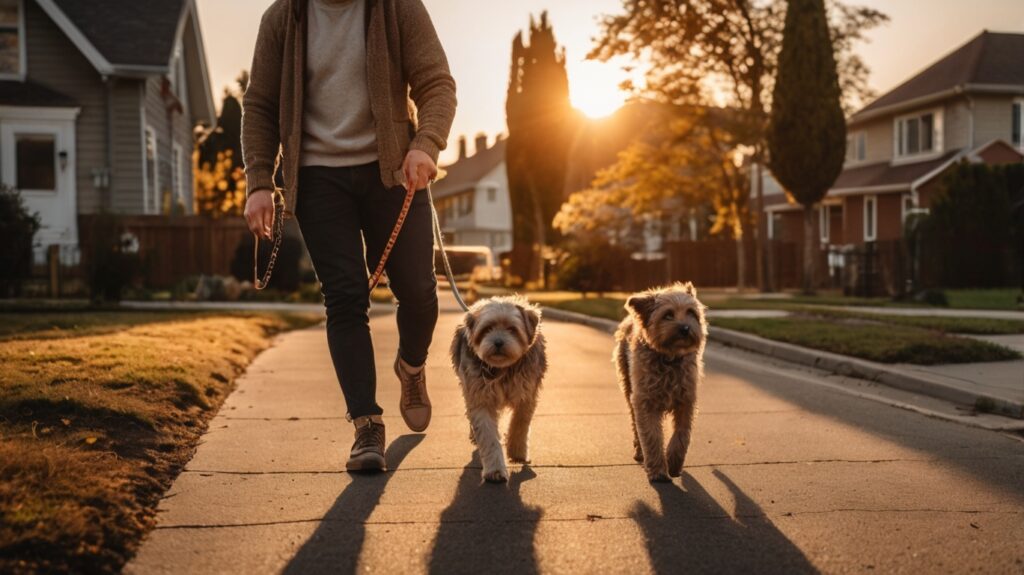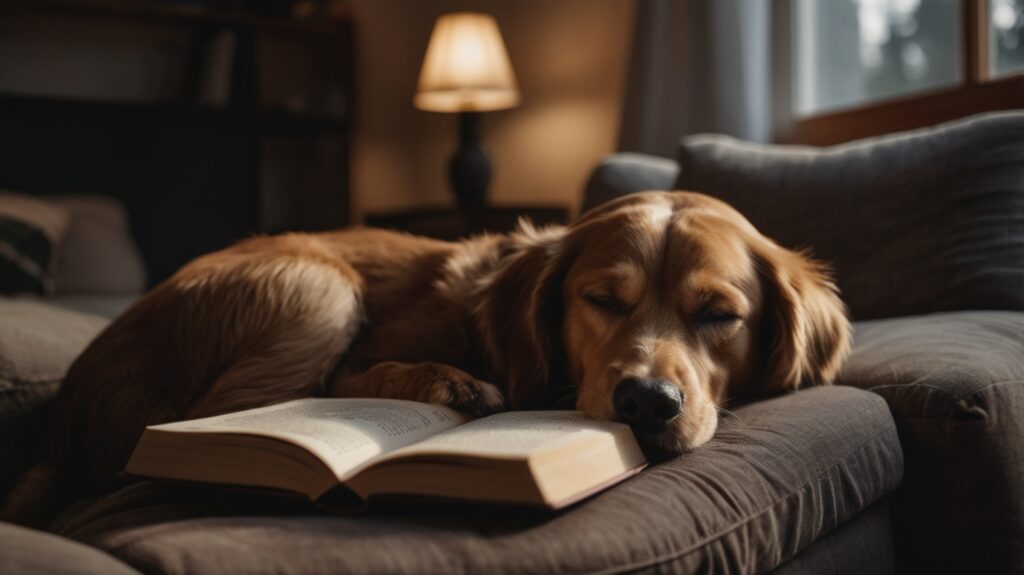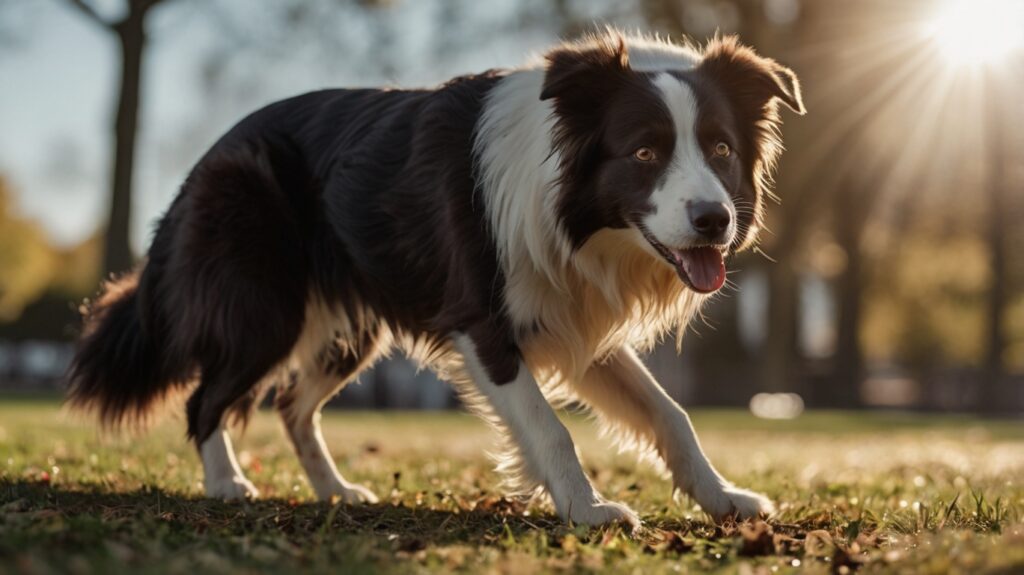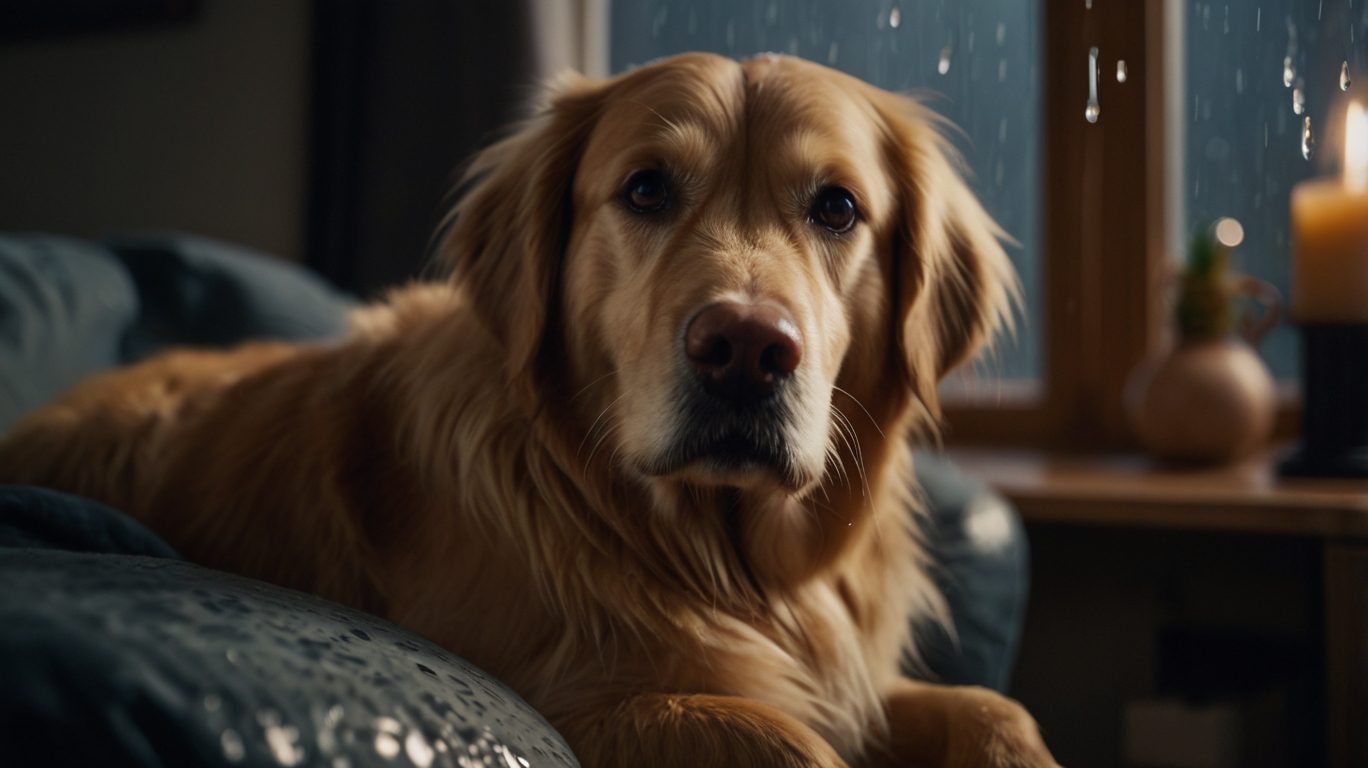Contents
- 1 How to Calm an Anxious Dog: What I’ve Learned After Years of Dealing With Nervous Pups
- 1.1 Why Dogs Get All Worked Up in the First Place
- 1.2 How to Calm an Anxious Dog: The Stuff That Actually Works
- 1.3 Dealing With Anxiety in the Moment
- 1.4 Common Triggers and What Actually Helps
- 1.5 Building Long-Term Confidence
- 1.6 When DIY Isn’t Enough
- 1.7 What Doesn’t Actually Work
- 1.8 Real Talk: What to Expect Timeline-Wise
- 1.9 Frequently Asked Questions About Anxious Dogs
- 1.9.0.1 Can I use human anxiety medication for my dog?
- 1.9.0.2 Should I get a second dog to help with my anxious dog’s loneliness?
- 1.9.0.3 How do I know if my dog needs professional help?
- 1.9.0.4 Will working from home make separation anxiety worse?
- 1.9.0.5 Are calming supplements worth trying?
- 1.9.0.6 Is my dog’s anxiety my fault?
How to Calm an Anxious Dog: What I’ve Learned After Years of Dealing With Nervous Pups
You know what’s funny? I never thought I’d become the person everyone asks about how to calm an anxious dog. But here we are, and honestly, I’ve picked up quite a bit along the way.
My first dog was this sweet golden retriever mix who would literally shake like a leaf every time it thundered. I’m talking full-body tremors, drooling, the works. I felt so helpless watching her suffer through every storm. That’s when I really started digging into figuring out how to calm an anxious dog – not just mine, but understanding the whole thing from the ground up.
Here’s what I wish someone had told me back then: it’s not your fault, it’s more common than you think, and yes, there are things that actually work. Not everything you read online, mind you, but real strategies that make a difference.
Why Dogs Get All Worked Up in the First Place
Okay, so before we jump into the how-to-fix-it part, let’s talk about why this happens. Because understanding the why makes the how so much easier.
Some dogs are just born more sensitive. It’s like people – some of us are naturally more anxious than others. Then you’ve got dogs who had rough starts in life, maybe didn’t get properly socialized as puppies, or went through something traumatic.
But here’s the thing that surprised me: sometimes perfectly loved, well-cared-for dogs develop anxiety too. My neighbor’s lab started getting separation anxiety at age four, completely out of nowhere. The vet said it just happens sometimes.
What Anxiety Actually Looks Like
The obvious stuff is easy to spot – the panting, pacing, destructive chewing when you leave. But some signs are sneakier. Like, did you know excessive shedding can be a stress response? Or that some anxious dogs become super clingy while others withdraw completely?
I learned this the hard way with a foster dog who would just… disappear. I’d find him wedged behind the couch or under the bed, trying to make himself invisible. Took me weeks to realize it wasn’t him being antisocial – he was genuinely scared.
How to Calm an Anxious Dog: The Stuff That Actually Works
Alright, let’s get into the meat of it. These are the strategies I’ve seen work, both with my own dogs and the dozens of anxious pups I’ve helped over the years.
Start With a Safe Haven

Every anxious dog needs their own space. Not just any corner, but a specific spot that’s theirs and theirs alone. I usually recommend starting with a crate or a specific room, but it depends on your dog.
The key is making it positive. Feed them there, give treats there, let them decompress there. Never use it for punishment – that defeats the whole purpose. When you’re figuring out how to calm an anxious dog, this safe space becomes like their reset button.
My current dog has this weird thing where she feels safest in the bathroom. Don’t ask me why, but that’s her spot during fireworks or when strangers come over. Works for her, works for me.
Routine is Everything (But Don’t Go Overboard)

Anxious dogs thrive on predictability. Same feeding times, same walk routes, same bedtime routine. It gives them something solid to hold onto when everything else feels chaotic.
But – and this is important – you don’t want to create a robot dog who falls apart if dinner is fifteen minutes late. I learned this lesson when my routine-obsessed rescue had a complete meltdown because I switched which door we used for walks. Oops.
The trick is building flexibility into the routine. Sometimes we take the long way home, sometimes treats come at random times. Keeps them grounded but adaptable.
Exercise Their Brain, Not Just Their Body
Sure, a tired dog is usually a calmer dog. But mental exercise? That’s the secret weapon when learning how to calm an anxious dog. Puzzle toys, sniffing games, basic training sessions – anything that gets their brain working.
I’ve got this one client whose border collie was destructively anxious until we started doing fifteen-minute training sessions every morning. Not complicated stuff, just basic commands and tricks. But giving his brain a job transformed him.
Think of it like meditation for dogs. When they’re focused on problem-solving, they can’t simultaneously be spiraling about whatever’s bothering them.
Dealing With Anxiety in the Moment
Your Energy Matters More Than You Think

This one took me forever to figure out. When your dog is having an anxiety attack, your natural instinct is to comfort them, right? But if you’re all worked up too, you’re just adding fuel to the fire.
Dogs read our energy like we read facial expressions. If you’re calm and matter-of-fact about whatever’s happening, it helps them stay grounded. Easier said than done when your dog is trying to claw through the front door, but it makes a real difference.
The Art of Strategic Ignoring
Here’s something counterintuitive: sometimes the best way to help an anxious dog is to not make a big deal about their anxiety. I’m not saying ignore them completely – that’s cruel. But don’t baby them either.
When my dog gets worked up about delivery trucks, I acknowledge it (“Yep, there’s a truck”) but then redirect her attention to something else. No dramatic comforting, no reinforcing the idea that trucks are indeed terrifying.
It’s a fine line, and honestly, it takes practice to get right.
Common Triggers and What Actually Helps
| Anxiety Trigger | Typical Dog Response | What I’ve Found Works |
|---|---|---|
| Thunderstorms | Hiding, panting, destructive behavior | Compression wraps, white noise, desensitization |
| Fireworks | Trembling, escape attempts, drooling | Safe space, calming music, sometimes medication |
| Being Left Alone | Chewing, barking, house accidents | Gradual training, puzzle toys, low-key departures |
| Strangers | Barking, cowering, or aggression | Slow introductions, treats, escape routes |
| Car Rides | Drooling, vomiting, shaking | Short positive trips, familiar blankets, treats |
Noise Phobias Are Tough
Storm and firework anxiety is probably the most common thing people ask me about. The compression shirts (like Thundershirts) work for some dogs – the gentle pressure seems to be calming. White noise machines help too.
But here’s the thing about noise desensitization: you have to start when they’re calm, not in the middle of a storm. I use apps that play storm sounds at really low volumes during training sessions, gradually increasing over weeks. It’s slow work, but it helps.
Separation Anxiety is a Whole Different Beast
This one’s hard because it conflicts with real life – you have to leave sometimes, right? The mistake most people make is turning departures and arrivals into huge emotional events. All that “mommy’s leaving but I’ll be right back, I love you so much” stuff actually makes it worse.
Instead, keep it boring. Grab your keys, say “see ya,” and go. Same with coming home – no dramatic reunions until they’re calm. I know it feels mean, but you’re actually helping them understand that you leaving and coming back is just normal life stuff.
Meeting New People
Some anxious dogs are fine with other dogs but terrified of humans. Others are the opposite. The key is letting them set the pace and always giving them an escape route.
I always tell people not to force interactions. Let the dog approach if they want to, ignore them if they don’t. Most anxious dogs come around eventually if there’s no pressure.
Building Long-Term Confidence
Training Builds More Than Obedience

Basic training isn’t just about having a well-behaved dog – it’s about building confidence. When dogs know what’s expected and can successfully do it, it actually reduces anxiety. They feel capable and secure.
I focus on positive reinforcement methods. Punishment or harsh corrections usually backfire with anxious dogs, making them even more worried about making mistakes.
Socialization (The Right Way)
If your dog’s anxiety comes from lack of exposure to the world, controlled socialization can help. Key word: controlled. Throwing an anxious dog into overwhelming situations typically makes things worse.
Baby steps work better. Maybe just sitting in the car outside the dog park before actually going in. Or having one calm person over instead of a party. Let your dog decide when they’re ready for more.
When DIY Isn’t Enough
Sometimes you need professional help, and there’s no shame in that. I’ve worked with behaviorists for my own dogs when things got beyond my skill level.
If your dog’s anxiety is getting worse despite consistent effort, or if they’re hurting themselves or others, it’s time to call in an expert. Same goes if they can’t function normally – refusing to eat, drink, or go outside.
Medication isn’t failure either. Anti-anxiety meds for dogs have gotten really good, and when combined with behavior work, they can be life-changing. It’s not about drugging your dog into submission – it’s giving them the chemical support to learn new, calmer responses.
What Doesn’t Actually Work
Old School “Dominance” Methods
Let me be super clear: punishing an anxious dog for being anxious is like yelling at someone for having a panic attack. It doesn’t help, usually makes things worse, and damages your relationship.
Those outdated “alpha” training methods can actually increase anxiety. Anxious dogs need to trust you, not fear you.
The Ignore-Everything Approach
Some people think the answer is completely ignoring anxious behavior. But there’s a difference between not reinforcing anxiety and completely dismissing your dog’s distress. You want to acknowledge without amplifying.
Quick Fixes and Magic Cures
I wish there was a magic bullet for how to calm an anxious dog, but there really isn’t. Those “miracle” training methods you see advertised? Usually too good to be true. Real progress takes time and consistency.
Real Talk: What to Expect Timeline-Wise
People always want to know how long this stuff takes. Honestly? It varies wildly. Some dogs show improvement in a few weeks, others take months. Severe cases might take a year or more of consistent work.
The key is celebrating small victories. Maybe your dog used to hide during every thunderstorm, but now they just pant a little. That’s progress. Maybe they used to destroy the house when you left, but now they just chew one sock. Still progress.
Frequently Asked Questions About Anxious Dogs
Can I use human anxiety medication for my dog?
Absolutely not. Human meds can be toxic to dogs, even in tiny amounts. If you think medication might help, talk to your vet about dog-specific options. There are several good ones available now.
Should I get a second dog to help with my anxious dog’s loneliness?
This is tricky. Sometimes a calm, confident dog can help an anxious one feel more secure. But other times you just end up with two anxious dogs. It really depends on your specific situation and what’s triggering the anxiety.
How do I know if my dog needs professional help?
If the anxiety is getting worse despite your best efforts, if they’re hurting themselves or being destructive to the point of danger, or if they can’t function normally (won’t eat, drink, go outside), it’s time for professional help. Aggression stemming from anxiety is another red flag.
Will working from home make separation anxiety worse?
It can, yeah. If your dog gets used to you being home 24/7 and then suddenly you start leaving again, it can trigger or worsen separation anxiety. Try to maintain some boundaries and occasionally leave for short periods even when working from home.
Are calming supplements worth trying?
Some work, some don’t. Quality varies hugely. If you want to try them, talk to your vet first about reputable brands. And remember, supplements work best combined with behavior modification, not as a standalone solution.
Is my dog’s anxiety my fault?
Probably not. Some dogs are just naturally more sensitive. Others had rough starts before you got them. Even well-loved, properly raised dogs can develop anxiety. Don’t blame yourself – focus on helping them feel better.
You know what’s weird? Working with anxious dogs has actually made me more patient with people too. There’s something about watching a scared dog slowly learn to trust the world again that puts things in perspective.
The thing about figuring out how to calm an anxious dog is that it’s not usually about one big breakthrough moment. It’s about tiny improvements, day after day, until one day you realize your dog isn’t hiding during thunderstorms anymore. Or they’re not destroying the couch when you go to work. Small victories add up to big changes.
Most anxious dogs can learn to be calmer with the right approach and enough time. Some will always be a bit more sensitive than others, but they can absolutely learn to cope better and enjoy life more. And honestly? The bond you build working through this stuff together is pretty special.
For additional information about canine anxiety and behavior, the American Kennel Club and PetMD offer research-based resources on dog behavior and mental health.
